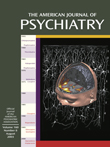The Relationship of Clozapine and Haloperidol Treatment Response to Prefrontal, Hippocampal, and Caudate Brain Volumes
Abstract
OBJECTIVE: The study was designed to assess the predictive relationship between brain structure volume and positive and negative symptom response to clozapine and haloperidol. METHOD: Partially responsive outpatients with schizophrenia who participated in a 10-week, parallel-group, double-blind comparison of clozapine and haloperidol and who had an available magnetic resonance imaging scan were included in the current study. Prefrontal gray and white matter, hippocampal, and caudate volumes were manually measured. The Scale for the Assessment of Negative Symptoms (SANS) and the Brief Psychiatric Rating Scale (BPRS) were used to assess symptom changes. The Simpson-Angus Rating Scale was used to assess extrapyramidal symptoms. RESULTS: Twenty-two patients randomly assigned to clozapine and 23 patients assigned to haloperidol met study entry criteria. There were significant interactions between treatment and right prefrontal gray matter volume for BPRS total score and SANS total score. There were no significant treatment-by-brain structure interactions for BPRS positive symptom items. Right prefrontal gray matter volume was also related to differential treatment effects for the BPRS subscales of anxiety/depression and hostility and the Simpson-Angus Rating Scale akathisia item. CONCLUSIONS: These results suggest that there is a differential interaction among clozapine and haloperidol, brain structure, and treatment response. Partially responsive patients with larger brain volumes may be more likely to experience the benefits of clozapine treatment, but they may be more vulnerable to side effects and experience a subsequent worsening of their symptoms when treated with haloperidol.



